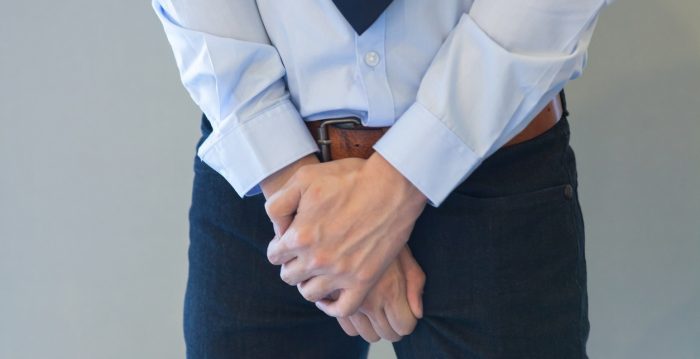The muscles, ligaments, and tissues of the pelvic floor support the bladder, rectum, and sexual organs. When the supportive structures weaken or become especially tight, doctors describe it as pelvic floor dysfunction. It is a common health issue.
When a person has pelvic floor dysfunction, the organs in the pelvis may drop. They often press down on the bladder or rectum, causing a leakage of urine or stool. Or, a person with this condition may have trouble urinating or passing stool.
Keep reading to learn more about pelvic floor dysfunction — including the symptoms, treatments, and some exercises that may help.
What is pelvic floor dysfunction?
The pelvic floor is made up of muscles, ligaments, and tissues that surround the pelvic bone. The muscles attach to the front, back, and sides of the bone, as well as to the lowest part of the spine, called the sacrum.
The function of the pelvic floor is to support the organs in the pelvis, which can include the:
- bladder
- rectum
- urethra
- uterus
- vagina
- prostate
People with pelvic floor dysfunction may have weak or especially tight pelvic floor muscles.
When the muscles tighten, or spasm, people may have trouble urinating or passing stool. When they weaken, the organs within the pelvis may drop and press down on the rectum and bladder.
The table below outlines several common types of pelvic floor dysfunction.
| Type of pelvic floor dysfunction | Description |
| Obstructed defecation | This occurs when stool enters the rectum, but the body cannot fully evacuate the bowels. |
| Rectocele | This involves tissue from the rectum protruding into the vagina. Stool may get caught in this pocket, forming a bulge in the vagina. |
| Pelvic organ prolapse | This refers to the pelvic floor stretching and the pelvic organs dropping as a result of age, childbirth, or a collagen disorder. |
| Paradoxical puborectalis contraction | This involves a pelvic floor muscle called the puborectalis contracting. When it happens, trying to pass stool may feel like pushing against a closed door. |
| Levator syndrome | This involves the pelvic floor muscles spasming after bowel movements. It can cause lasting dull pain or achy pressure high in the rectum. |
| Coccygodynia | This refers to pain in the tailbone that worsens during and after bowel movements. |
| Proctalgia fugax | This involves painful spasms of the rectum and muscles in the pelvic floor. |
| Pudendal neuralgia | This refers to irritation or damage to the pudendal nerves, which help the pelvis function. |
| Urethrocele | This refers to the urethra pressing into the vagina. |
| Enterocele | This involves the small intestine descending and pushing into the vagina, forming a bulge. |
| Cystocele | This involves the bladder dropping and pushing into the vagina. |
| Uterine prolapse | This refers to the uterus descending and pushing into the vagina. |
Symptoms
Pelvic floor dysfunction can cause a variety of symptoms, and some can interfere with daily life.
Depending on the type of pelvic floor dysfunction, a person may experience:
- pelvic pain
- pressure
- a bulge somewhere in the lower pelvic region
- stress urinary incontinence, which involves a small amount of urine leaking from the body due to an activity such as coughing
- involuntary leakage of stool
- incomplete urination
- bowel movement dysfunction
- pain during sexual intercourse
Also, some people who see their doctors about bladder overactivity find that pelvic floor dysfunction is responsible.
Causes
Many issues can cause the structures of the pelvic floor to weaken, including:
- age
- systemic diseases
- lasting health issues that cause increased pressure in the abdomen and pelvis, such as a chronic cough
- pregnancy
- trauma during delivery
- multiple deliveries
- large babies
- operative delivery
Research indicates that stress urinary incontinence, pelvic organ prolapse, or both occur in about half of all women who have given birth. These issues are closely associated with birth-related injury to the pelvic floor muscles.
The pelvic floor muscles can also stretch naturally with age. Stress urinary incontinence and pelvic organ prolapse become more common with increasing age in females, for example.
Collagen disorders can also affect the muscles’ ability to support the pelvic organs.
Meanwhile, coccygodynia usually stems from trauma to the tailbone, such as from a fall. That said, in about one-third of people with the condition, the cause of coccygodynia is unknown. The pain can make having a bowel movement difficult.
Exercises
Doctors recommend pelvic floor exercises in various situations.
They may particularly benefit pregnant women because the pelvic floor muscles can stretch and weaken during labor. Strengthening these muscles may help prevent incontinence after the baby is born. Some doctors recommend that women who wish to become pregnant start the exercises ahead of time.
Males can also benefit from pelvic floor exercises, though the dysfunction is more common in females. In males, these exercises can help prevent pelvic organ prolapse and urinary incontinence and improve sexual intercourse.
To exercise these muscles, a person should be sitting comfortably. Then, they should attempt to squeeze their pelvic muscles without holding their breath.
It is important to isolate the correct muscles without tightening those of the stomach, buttocks, or and thighs.
Doctors recommend that females aim to do 10 long squeezes — holding each for 10 seconds — followed by 10 short squeezes. However, initially, it may be a good idea to practice holding a squeeze for a few seconds at a time.
By practicing frequently, a person should be able to add more contractions to their routine week by week. It is important to do this gradually and to avoid overworking the muscles.
Within a few months, a person may notice a reduction in their symptoms. Even if symptoms resolve completely, a person should continue strengthening these muscles.
There are physical therapists who specialize in pelvic floor dysfunction. A person may find that consulting one of these professionals leads to a better outcome.
Treatment
Doctors determine the cause of pelvic floor dysfunction before recommending treatment because different types of dysfunction require different approaches.
The purpose of treatment is to relieve or reduce symptoms and improve the person’s quality of life. For some people, a combination of treatment methods works best.
Doctors may recommend:
- Dietary changes: For example, eating more fiber, drinking more fluids, and taking certain medications can make bowel movements easier.
- Laxatives: Taking a daily laxative may help people with pelvic floor dysfunction pass stool, but it is important to consult a healthcare provider first because not all laxatives are equally effective.
- Pain relief: Some people require injections of pain relief or anti-inflammatory medication to relieve their symptoms.
- Biofeedback: This involves electrical stimulation, ultrasound therapy, or massage of the pelvic floor muscles to help improve rectal sensation and muscle contraction.
- Pessary: A doctor or nurse inserts a pessary into the vagina to support prolapsed organs. This type of device can help treat various symptoms of pelvic floor dysfunction, either as an alternative to surgery or while a person awaits surgery.
- Surgery: When prolapse interferes with daily activities, a doctor may recommend surgery. Large rectoceles also require surgery if the person experiences symptoms.
Stem cell therapies
Researchers behind a 2016 study investigated whether a stem cell-based therapy could resolve pelvic floor dysfunction in rats.
The researchers engineered the stem cells to produce and release elastin and collagen into the pelvic floor and injected them into rats with pelvic floor dysfunction.
The elastin and collagen promoted the repair of pelvic floor structures and decreased signs of stress urinary incontinence.
In a final component of the study, the researchers developed stem cells that blocked a factor that stops the production of elastin. This promoted increased production and release of elastin into the pelvic floor.
With further studies, researchers may find that similar therapies are effective in humans.
When to see a doctor
Anyone who experiences painful bowel movements, difficulty urinating or passing stool, pelvic pain, or pain during sexual intercourse should speak with a doctor.
An unusual bulge in the lower pelvic region may also be a reason to see a doctor, though a bulge alone may not be a cause for concern.
People with pelvic floor dysfunction have plenty of treatment options. While the topic may be uncomfortable to bring up with a doctor, it is important to seek professional advice about these symptoms.
While some family doctors may not be familiar with pelvic floor dysfunction, specialists such as colorectal doctors, urologists, and gynecologists can help diagnose the issue and recommend the best course of action.
Summary
Pelvic floor dysfunction can affect anyone, but pregnant women have the highest risk.
The various types of pelvic floor dysfunction stem from different causes, and a doctor must identify the underlying issue before developing a treatment plan.
Exercises can help some people with pelvic floor dysfunction. Depending on the cause, a doctor may also recommend dietary changes, medication, a pessary, biofeedback, or surgery.






